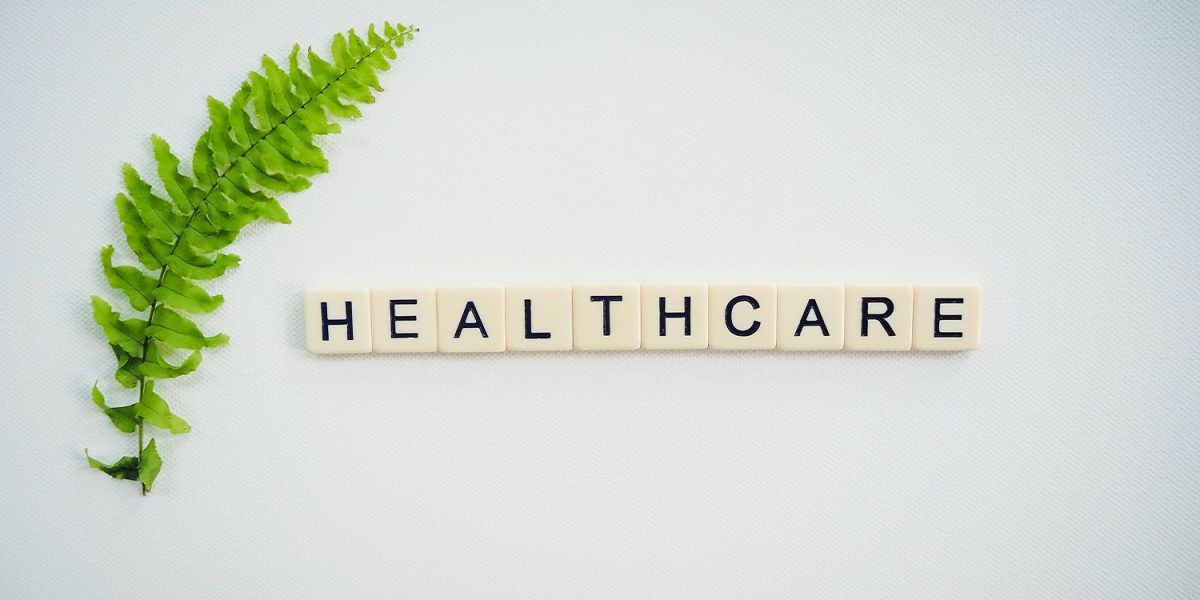Author: Dr. Anke Verlinden
As governments keep debating which measures can be effective in order to prevent further COVID spread and balance economic consequences with the risk of collapse of their health care system, focus is geared towards social distancing, mask wearing regulations, different versions of ‘lockdown’, expanding testing strategies, vaccine development/distribution and medical treatments. One very important tool has been left out of the picture completely: building a more resilient population. We need to help people build an immune system that can do active surveillance, can find viruses (as well as cancer cells) and get rid of them without overreacting. Because an immune system that’s on high alert causes unwanted inflammation, which is a significant contributor to severe illness and death from COVID-19.
Unfortunately, the majority of people in developed countries are currently overfed and undernourished, which leads to chronic inflammation and disease. No one individual is to blame, because the true cause lies within our socio-economic system that allows food manufacturers to prioritize profits over health and nutrition. The result is a population that is rampant with chronic diseases which make us susceptible to the perils of COVID-19. This pandemic is our wake up call. It’s our opportunity to build resilience to make us better equipped to fight this virus as well as all other diseases.
In reality, COVID-19 is what doctors refer to as “an acute on chronic problem”, where the current viral pandemic exposes a larger underlying pandemic of non-communicable diseases (NCDs) that has been on the rise for decades. According to a World Health Organization (WHO) report, NCDs were responsible for 71% of all global deaths in 2018, including 15 million people between the ages of 30 & 69. Cardiovascular diseases (heart attacks, strokes, …) account for the majority, followed by cancers, respiratory diseases and diabetes.1 How is this relevant to COVID-19? These four disease groups – responsible for 80% of premature deaths worldwide – were also found to be the most prevalent underlying conditions present among hospitalized COVID-19 patients.2 They play a critical role in COVID-19 severity and poor outcomes, significantly increasing the risk of intensive care admission and death.3-4 A June 2020 Lancet editorial broke it down nicely:
“We have not just been fighting a communicable disease alone but also a growing backdrop of non-communicable disease (such as diabetes and obesity) that needlessly raise the death toll.”5
The common denominator explaining this link is chronic inflammation, which lies at the root of both age and diet-related NCDs, including obesity, type 2 diabetes, cardiovascular disease, many cancers, respiratory problems, auto-immune disorders, arthritis, dementia and depression.6 When a person with a background of chronic inflammation is exposed to a virus, the cells responsible for fighting that attack do not function as effectively as they should.7 This delayed and inferior immune response may also lead to an impaired effectivity of immunization of these at-risk patients.8 This implies that putting all of our hopes into a vaccine may not be the answer for those at highest risk, as they will probably have the lowest response rate. In addition, chronic inflammation is associated with an increase in several pro-inflammatory cytokines – messengers released by immune cells to help regulate the immune response. It’s the ‘cytokine storm’ from an abnormal immune response that leads to the acute respiratory distress syndrome that causes severe lung injury and death in many of those who are killed by COVID-19.9
Based on an analysis published in the Lancet Global Health, it is estimated that 22% of the global population are at increased risk of severe COVID-19 as a result of their underlying medical condition. When looking into regional differences, this number ranges from 16% in Africa to 28% in Northern America & 31% in Europe.10 Public health agencies have issued guidelines on who is considered to be at increased risk of severe COVID-19, in order to make projections of the probable health burden in different countries, design effective shielding measures & inform vaccination decisions.11-13 But has anyone considered implementing strategies to elevate the baseline health & resilience of those at-risk by empowering them to take control over their health instead of being a sitting-duck scared to get infected? The Center for Disease Control & Prevention has a page on their website for people with underlying medical conditions advising them on what actions to take to reduce their risk: it focuses on social distancing, continuing medications (with a 30 day supply), staying in touch with your healthcare team and not delaying emergency care.14 The WHO has issued a leaflet on COVID-19 in patients with NCDs that includes a tiny paragraph with a very general statement on maintaining a healthy lifestyle.15
There is overwhelming evidence that lifestyle factors such as poor dietary patterns, physical inactivity, tobacco use, excessive alcohol consumption and psychosocial factors (e.g. chronic stress and lack of social support and community), are key factors in the development of chronic inflammation and NCDs.16-17 Contrary to common belief, adhering to healthy lifestyle habits can have a strong impact by potentially preventing 93% of diabetes, 81% of heart attacks, 50% of strokes and 36% of all cancers.18 On top of that, lifestyle changes can create improvement and even reversal of NCDs that are already present, as the human body possesses a strong capacity to recover from illness. As a result, it’s not too late for those already affected: dietary changes have been shown to rapidly reduce blood pressure & cardiovascular disease as well as improve blood sugar control in patients suffering from type 2 diabetes with the possibility of sending their condition into remission within weeks to months.19-20
By leaving this information out of public knowledge, we are missing out on an amazing opportunity to elevate our overall health and relieve pressure from our health care systems.
COVID-19 may gradually disappear, but the consequences of lifestyle-related chronic disease will continue to cause endless premature deaths and burden both our healthcare system and our economy.
To exercise personal responsibility, we need knowledge & choice. We need to re-educate ourselves on what a healthy lifestyle entails and have affordable access to healthy foods. The measures our governments are taking to fight this new viral outbreak are essential, but are not a long term solution. Now is the time for governments to step up and address the crisis in our food system by providing education on lifestyle medicine and changing food regulations so that the food industry is held accountable for the impact they have on our underlying health and the resilience of our populations.
- World Health Organization. Non-Communicable Diseases. https://www.who.int/news-room/fact-sheets/detail/noncommunicable-diseases
- Emami A, Javanmardi F, Pirbonyeh N, Akbari A. Prevalence of Underlying Diseases in Hospitalized Patients with COVID-19: a Systematic Review and Meta-Analysis. Arch Acad Emerg Med. 2020;8(1):e35.
- Jordan RE, Adab P & Cheng K. Covid-19: risk factors for severe disease and death. BMJ. 2020 Mar 26;368:m1198.
- Javanmardi F, Keshavarzi A, Akbari A, Emami A & Pirbonyeh N. Prevalence of underlying diseases in died cases of COVID-19: A systematic review and meta-analysis PLoS One. 2020; 15(10): e0241265.
- The Lancet Diabetes & Endocrinology. COVID-19: underlying metabolic health in the spotlight. Lancet Diabetes Endocrinol. 2020 Jun; 8(6): 457.
- Bennett JM, Reeves G, Billman GE & Sturmberg J.P. Inflammation-Nature’s Way to Efficiently Respond to All Types of Challenges: Implications for Understanding and Managing “the Epidemic” of Chronic Diseases. Front. Med. 2018;5:316.
- Luzi L, Radaelli M. Influenza and obesity: its odd relationship and the lessons for COVID-19 pandemic. Acta Diabetol. 2020 Jun;57(6):759-764.
- Honce R, Cherry S.S. Impact of obesity on influenza A virus pathogenesis, immune response, and evolution. Front Immunol. 2019;10:1071.
- De la Rica R, Borges M & Gonzalez-Freire M. COVID-19: In the Eye of the Cytokine Storm. Front Immunol. 2020; 11: 558898.
- Clark A, Jit M, Warren-Gash C et al. Global, regional, and national estimates of the population at increased risk of severe COVID-19 due to underlying health conditions in 2020: a modelling study. Lancet Glob Health. 2020 Aug; 8(8): e1003–e1017.
- Centers for Disease Control and Prevention. People who are at higher risk for severe illness. Coronavirus Disease 2019 (COVID-19). https://www.cdc.gov/coronavirus/2019-ncov/need-extra-precautions/people-at-higher-risk.html
- Public Health England Guidance on social distancing for everyone in the UK. https://www.gov.uk/government/publications/covid-19-guidance-on-social-distancing-and-for-vulnerable-people/guidance-on-social-distancing-for-everyone-in-the-uk-and-protecting-older-people-and-vulnerable-adults
- WHO. Taxonomy and glossary of public health and social measures that may be implemented to limit the spread of COVID-19. https://www.who.int/emergencies/diseases/novel-coronavirus-2019/phsm
- Centers for Disease Control and Prevention. People with certain medical conditions. https://www.cdc.gov/coronavirus/2019-ncov/need-extra-precautions/people-with-medical-conditions.html
- WHO. Information note: COVID-19 and NCDs. https://www.who.int/docs/default-source/inaugural-who-partners-forum/covid-19-and-ncds—final—corr7.pdf
- Bosma-den Boer MM, van Wetten ML & Pruimboom L. Chronic inflammatory diseases are stimulated by current lifestyle: how diet, stress levels and medication prevent our body from recovering. Nutrition & Metabolism 2012; 9:32.
- Kvaavik E, Batty GD, Ursin G, Huxley R, Gale CR. Influence of individual and combined health behaviors on total and cause-specific mortality in men and women: the United Kingdom health and lifestyle survey. Arch Intern Med 2010; 170(8): 711–8.
- Ford ES, Bergmann MM, Kröger J et al. Healthy living is the best revenge: findings from the European Prospective Investigation Into Cancer and Nutrition-Potsdam study. Arch Intern Med. 2009 Aug 10;169(15):1355-62.
- Unwin DJ, Tobin SD, Murray SW, Delon C & Brady AJ. Substantial and Sustained Improvements in Blood Pressure, Weight and Lipid Profiles from a Carbohydrate Restricted Diet: An Observational Study of Insulin Resistant Patients in Primary Care. Int J Environ Res Public Health. 2019 Aug; 16(15): 2680.
- Hallberg SJ, McKenzie AL, Williams PT et al. Effectiveness and Safety of a Novel Care Model for the Management of Type 2 Diabetes at 1 Year: An Open-Label, Non-Randomized, Controlled Study. Diabetes Ther. 2018 Apr;9(2):583-612.







